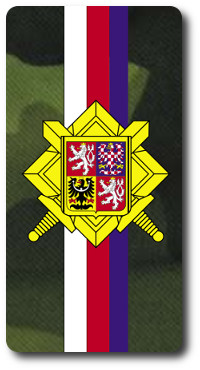Topic: Military Theory

Czech Principles of Combat Operations
Doctrine of the Armed Forces of the Czech Republic, 2004
 Common principles of military operations stated in chapter 4 of this doctrine, fully apply to combat operations too, for which the following principles are specific:
Common principles of military operations stated in chapter 4 of this doctrine, fully apply to combat operations too, for which the following principles are specific:
Mobility represents the armed forces elements capabilities to redeploy from one place to another one within required time limits, while maintaining the readiness (capability) to accom- plish assigned combat tasks.
Information superiority. Success in the operation (combat) will depend on the amount of information and its appropriate and timely use. This requirement will depend on the level of communication and information systems and their connection with the weapon systems. The commanders should endeavor, based on effective information utilization, to beat the opponent to his intents, and at the same time to eliminate his access to information, which he needs for his decisions.
Air space domination is one of the air force s most important tasks during joint operations conduct. It creates conditions in which land-, air- and naval operations can be conducted.
Offensive. In all combat operations, even in those where the opponent initially has the activity and freedom of action, commanders at all levels should employ every opportunity to maintain or gain the initiative and strike the opponent. Success in the operation depends directly on the troops’ individual and collective determination to clash with the enemy and break his will to fight.
Combat capabilities preservation represents the requirement, that commanders should take pains to preserve the combat capabilities of their troops until combat tasks are completed and make an effort to achieve the operational objective with minimal friendly losses. Every opportunity should be taken to rest the troops and to provide all-round support. Relief of fight-exhausted units, troop reinforcement and material replenishment are important for restoring the unit's combat capabilities.
Flexibility represents the requirement, that commanders must always be able, during combat operations, to respond quickly and in an optimal way to the actual combat situation develo- pment bearing in mind the necessity of successfully achieving the final operational objectives.
Elimination of the opponent. The operation s objective can be achieved by physically eliminating the adversary, or bringing about the loss of his combat capabilities. The significance of physical elimination of the adversary gradually decreases in current operations (combat), the alternative is to defeat the adversary by breaking the cohesion of his activity through combining manoeuvre and fire power in such a way that he no longer has opportunity or loses the will to continue combat.
Breaking the will to fight. The use of deceptive measures, psychological warfare, stratagems and selective use of force and surprise undermines the enemy s will to fight. In this way, a commander can avoid the large-scale physical destruction of enemy forces and he can even defeat a stronger enemy.
Selective destruction. Current combat activity is not conducted only to the forward edge of the battle area, but throughout the depth of the enemy s battle formation. Selective destruction of the adversary's combat power is based on disruption of his operational or combat formation elements cohesion, (that means disruption of functionality of elements ensuring his mobility, command posts, logistic systems, communication and information systems etc.), both in contact and in the depth of his operational (combat) formation.

